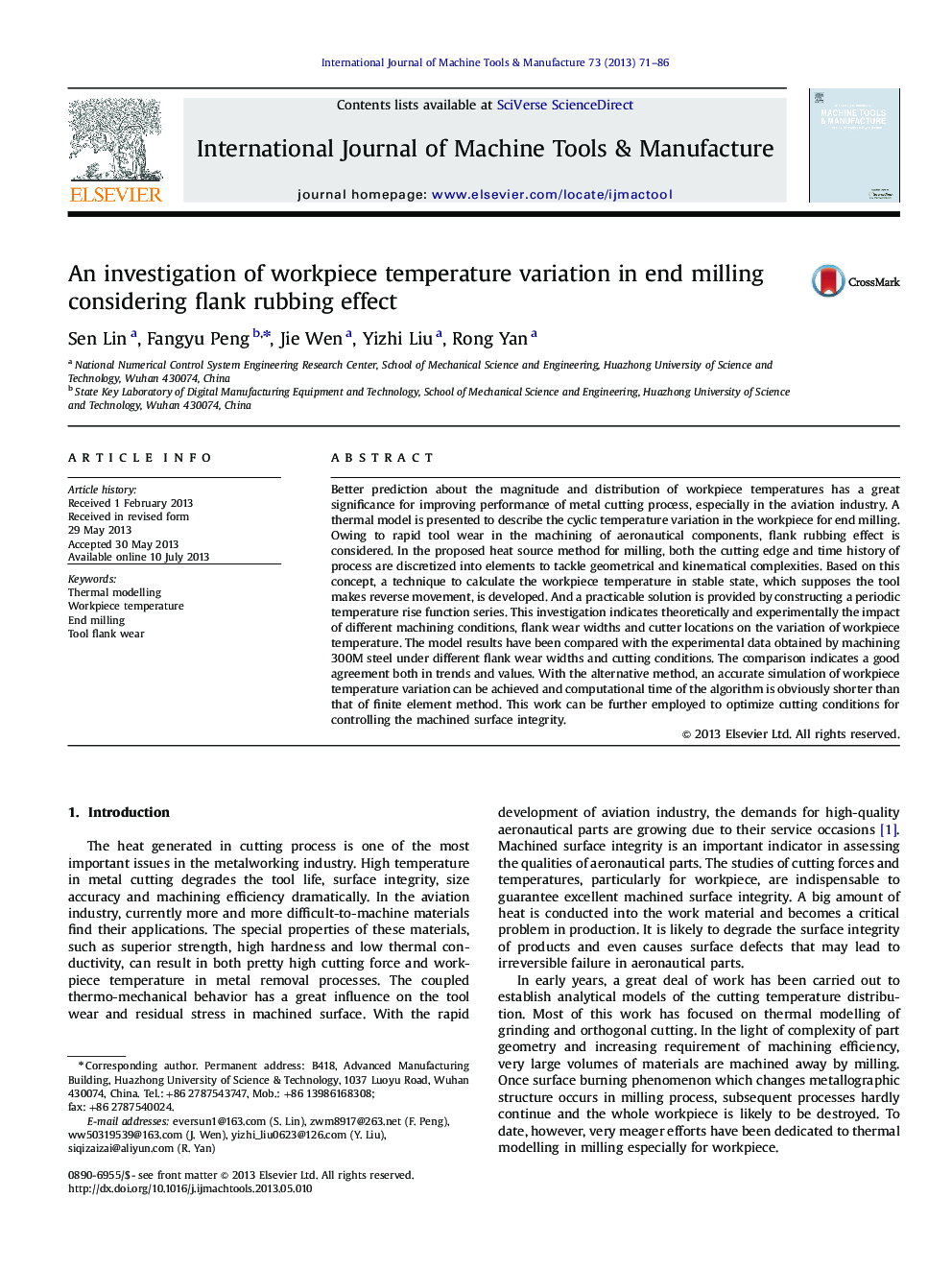| Article ID | Journal | Published Year | Pages | File Type |
|---|---|---|---|---|
| 7173483 | International Journal of Machine Tools and Manufacture | 2013 | 16 Pages |
Abstract
Better prediction about the magnitude and distribution of workpiece temperatures has a great significance for improving performance of metal cutting process, especially in the aviation industry. A thermal model is presented to describe the cyclic temperature variation in the workpiece for end milling. Owing to rapid tool wear in the machining of aeronautical components, flank rubbing effect is considered. In the proposed heat source method for milling, both the cutting edge and time history of process are discretized into elements to tackle geometrical and kinematical complexities. Based on this concept, a technique to calculate the workpiece temperature in stable state, which supposes the tool makes reverse movement, is developed. And a practicable solution is provided by constructing a periodic temperature rise function series. This investigation indicates theoretically and experimentally the impact of different machining conditions, flank wear widths and cutter locations on the variation of workpiece temperature. The model results have been compared with the experimental data obtained by machining 300M steel under different flank wear widths and cutting conditions. The comparison indicates a good agreement both in trends and values. With the alternative method, an accurate simulation of workpiece temperature variation can be achieved and computational time of the algorithm is obviously shorter than that of finite element method. This work can be further employed to optimize cutting conditions for controlling the machined surface integrity.
Related Topics
Physical Sciences and Engineering
Engineering
Industrial and Manufacturing Engineering
Authors
Sen Lin, Fangyu Peng, Jie Wen, Yizhi Liu, Rong Yan,
